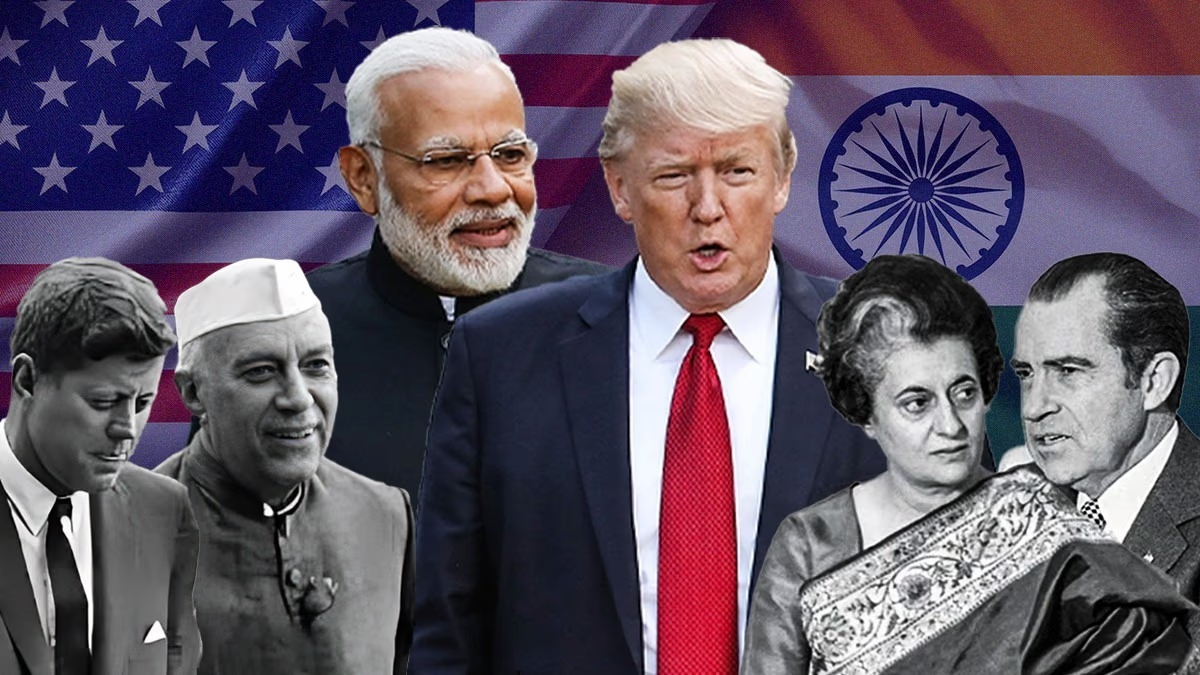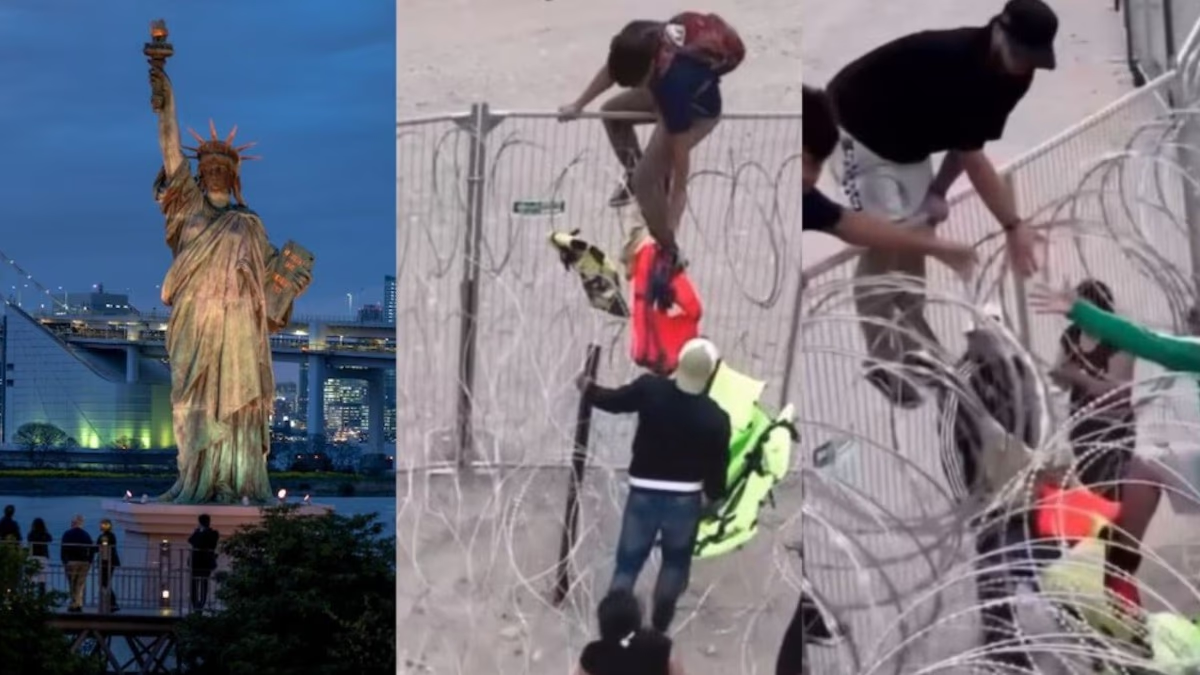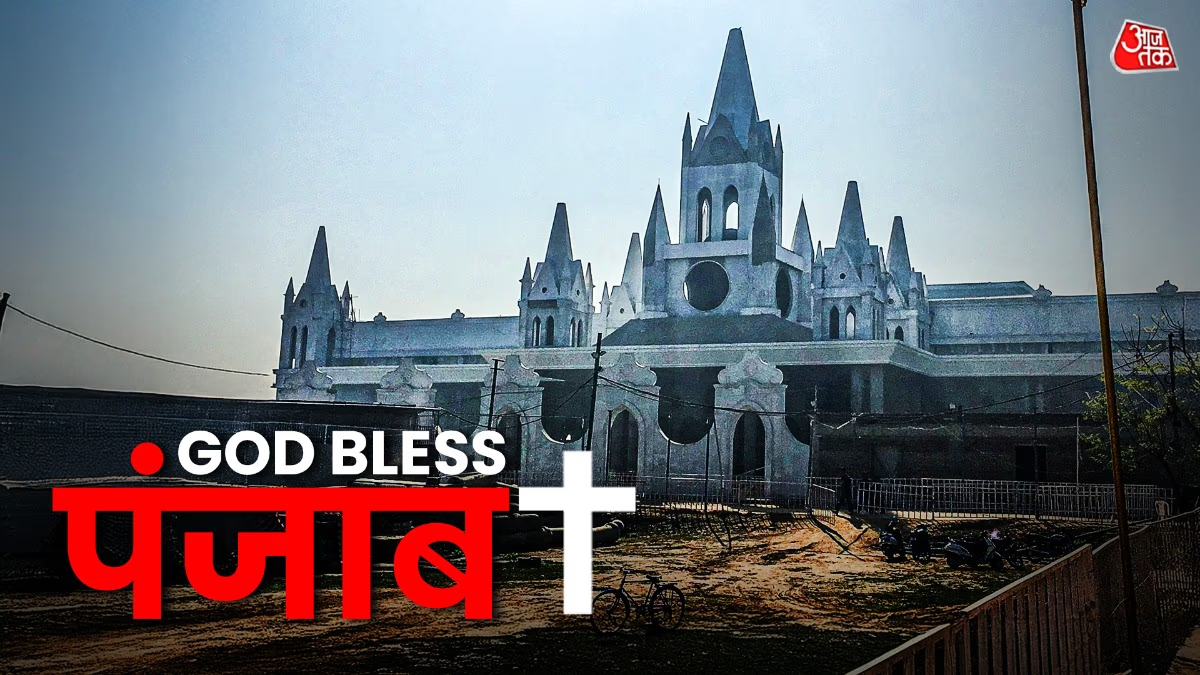You Shouldn't Visit America for the First Time...
On October 11, 1949, Pandit Jawaharlal Nehru wrote to his sister Vijaya Lakshmi Pandit. At that time, he was preparing for his first US visit. These words are from that letter. Almost 75 years after a Prime Minister's first US visit, today, PM Narendra Modi arrives in America, where he will meet US President Donald Trump. The chemistry between the leaders of these two powerful nations influences geopolitics. The relationship between India and the USA wasn't always as we see it today. There is a rich history of ups and downs between the two countries.
The foundation of the Indo-US relations was laid in 1949, two years after India gained independence. During India’s nascent days post-independence, the US President was Harry S. Truman, and India's first Prime Minister was Pandit Jawaharlal Nehru. After World War II, Truman played a pivotal role in steering America through tough times. Yet, some of his decisions left a deep wound globally. It was under Truman's tenure that America dropped atomic bombs on Hiroshima and Nagasaki. This era focused on countering the growing influence of the Soviet Union, though America's stance towards India wasn't balanced.
The Tumultuous Beginning of India-US Relations
As India sought stability after centuries of domination, hopes were pinned on America. However, when Nehru visited the US in 1949, seeking support, the Truman administration remained disinterested.
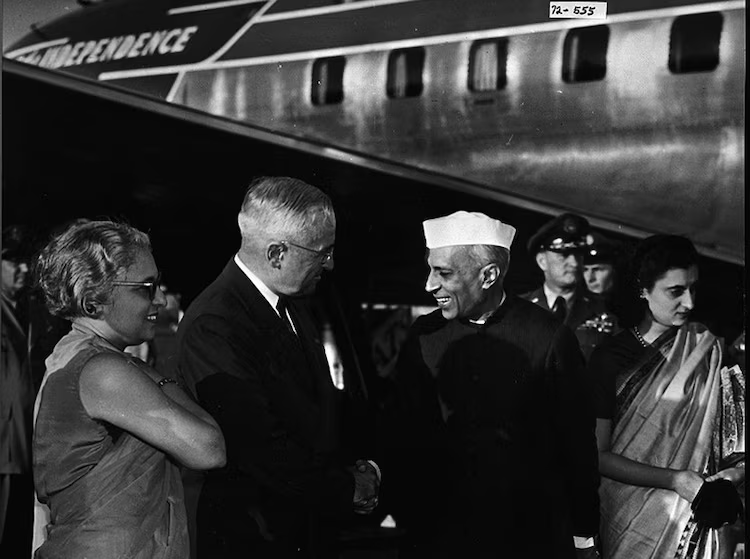
Source: aajtak
In her book
A Matter of Trust: India-US Relations from Truman to Trump
, Meenakshi Ahmed mentions that many world leaders held Nehru in high regard. However, Nehru didn't want to beg for help. He wished for America to proactively support India. Truman's view was skewed due to Nehru's non-alignment policy, seeing him as a communist, which caused trust issues. In Truman's administration, Secretary of State Dean Acheson was also dismissive towards Nehru.
On this US visit, Nehru was accompanied by his daughter Indira Gandhi. Dean Acheson hosted a dinner in Washington DC in Nehru’s honor.
During this dinner, Treasury Secretary John Snyder arrived intoxicated, chastising foreign guests for allegedly coming to America to extort money.
This was a missed respect opportunity for a newly independent nation's leader.
British journalist of Indian origin, Mihir Bose, in his book
From Midnight to Glorious Morning: India Since Independence
, calls Nehru's 1949 US tour a significant
'political failure'
. Later, Acheson publicly described Nehru as the ‘most complex man’ he ever met.
On October 13, 1949, addressing the US Congress, Nehru said,
“India and America’s voices may differ, but we share much in common. Like you, we attained independence through long struggles. Like you, we are republics founded on federal principles, placing our constitution above all, granting us fundamental rights.”
Although educated abroad with a secular and liberal image, Nehru’s relationship with American leaders remained strained. Nonetheless, he maintained a close rapport with US Ambassadors like Henry Grady, Chester Bowles, John Kenneth, and Ellsworth Bunker. However, America was irked by Nehru’s reluctance to criticize Soviet invasions in Eastern Europe and Czechoslovakia, threatening to halt food aid to India.
America initially approached international relations with a domineering attitude, wielding wealth and power to pressure smaller nations, which bred resentment among Indians. From Truman to Eisenhower and John Kennedy, all sought to address the Kashmir issue, applying various pressures on Nehru.
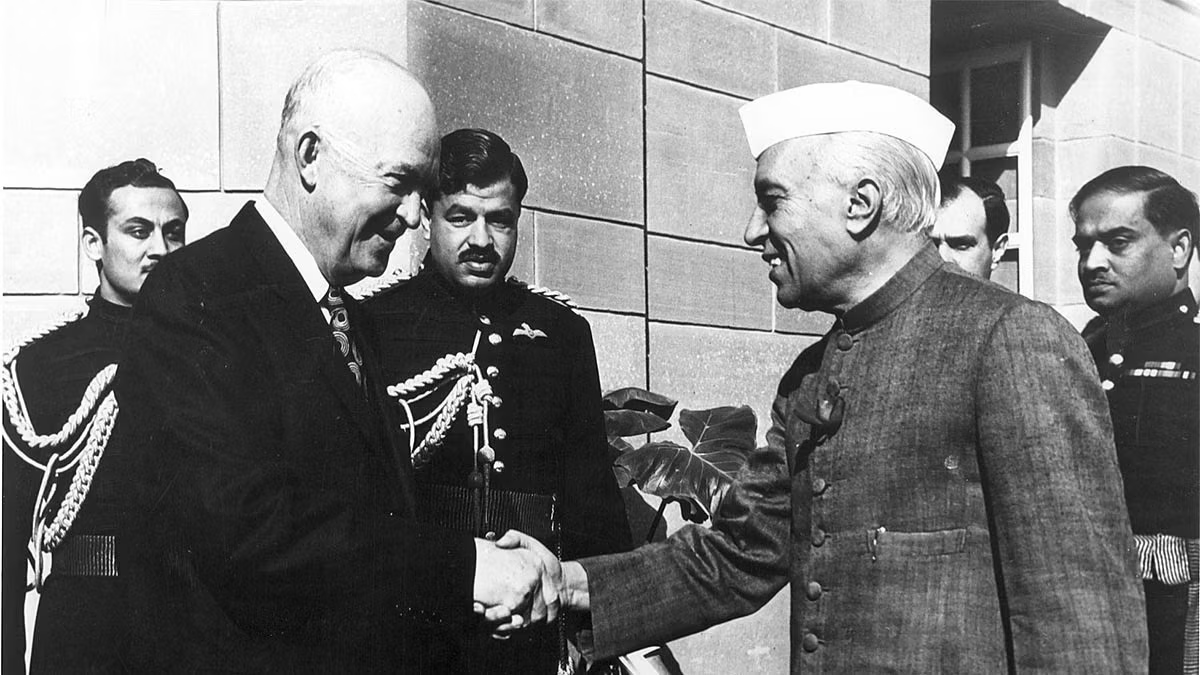
Source: aajtak
Meenakshi Ahmed writes that when the US decided to provide military assistance to Pakistan, the Indo-US relations turned cold. To ease tensions, President Eisenhower invited Nehru to his Gettysburg hometown in 1956. After Nehru arrived in Washington on December 16, 1956, Eisenhower met him at Blair House and later took him to his Gettysburg farm, a rare honor for foreign leaders. They conversed for hours, an interaction recorded in a 14-page note.
In his memoir
Waging Peace 1956-1961
, Eisenhower expressed his fondness for Nehru, emphasizing his desire to help India, highlighting Nehru’s importance to India.
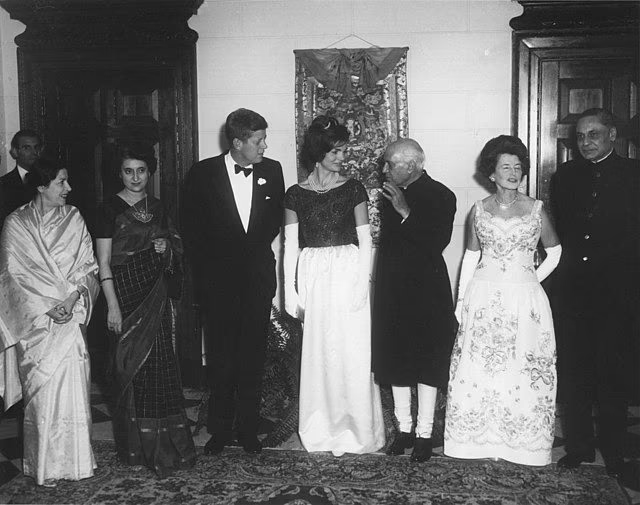
Source: aajtak
As the years passed, 1961 brought new dynamics. With John F. Kennedy’s presidential victory, he initially sought to win over India, sending his wife Jackie Kennedy on a goodwill tour. Her visit created significant media buzz, with Nehru deeply impressed. A dinner at the Indian embassy with First Lady Jackie and her sister Lee Radziwill marked a prominent social event.
However, the following year saw China’s aggression against India. Nehru sought US support in the conflict, receiving assistance from Kennedy, which improved bilateral relations despite India’s defeat. Unfortunately, Nehru and Kennedy couldn't witness this transformation last; Kennedy was assassinated in 1963, followed by Nehru’s death in 1964.
Indira and India’s Pivotal Relations with America
Upon Nehru’s demise, Indira Gandhi became Prime Minister in 1966. Unlike her father, Indira’s personality sharply contrasted. She disapproved of US policies on Vietnam and voiced her opinion candidly, irking President Lyndon B. Johnson.
Johnson’s temper impacted the food aid India desperately needed during a famine, using it as leverage. Seeking aid led Indira to visit the US, where Ramachandra Guha notes in
India After Nehru
, media portrayed her as begging.
New Indian leader comes begging.
Yet, Indira’s visit significantly impressed both Americans and President Johnson. Still, upon her return, the US imposed conditions. India wanted an annual grain supply at once, but Johnson insisted on monthly supplies, believing Indians should learn American agricultural techniques.
Did President Nixon Dislike Indira Gandhi?
Prime Minister Indira Gandhi’s strained rapport with President Richard Nixon is well-documented. In the 1971 conflict, Nixon and advisor Henry Kissinger openly sided with Pakistan.
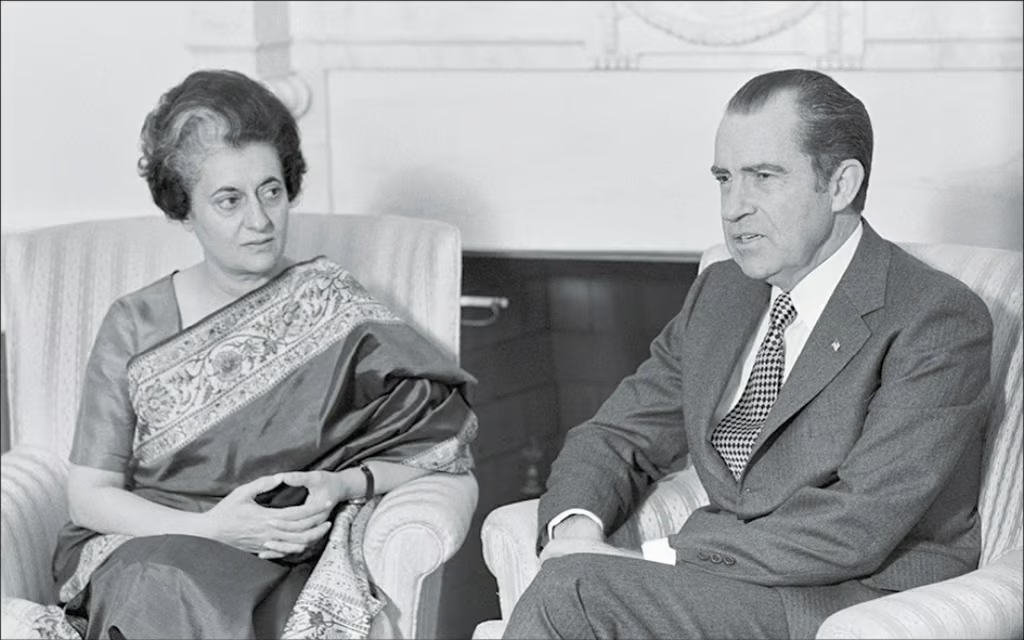
Source: aajtak
During her US visit in 1971, Nixon left her waiting for 45 minutes. Post-victory in the 1971 war, Indira's global stature soared, shedding India’s non-aligned stance, aligning with the Soviet bloc.
In 2005, when White House tapes were declassified, Nixon and Kissinger were heard using derogatory remarks about India and Indira. The Nixon era remains the darkest period in Indo-US relations.
Pokhran Test Tensions and Manmohan Singh’s Efforts
The 1974 Pokhran nuclear test strained ties with the US. However, with Manmohan Singh’s ascension in 2004, efforts to mend relations were initiated. In July 2005, Singh visited the US, paving the way for a nuclear agreement.
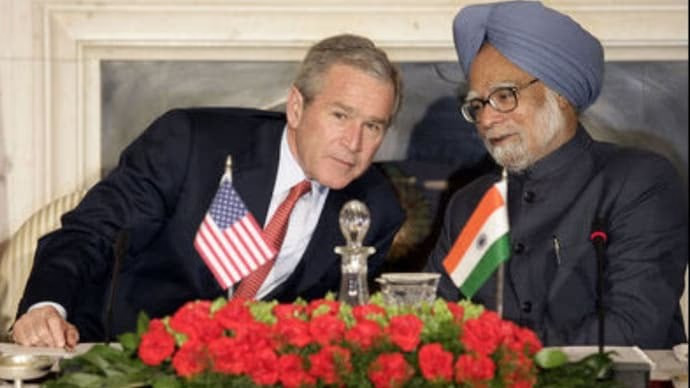
Source: aajtak
To thaw post-Pokhran tensions, Singh persuaded President George W. Bush to initiate a nuclear deal. When Bush visited India in March 2006, a historic agreement was signed, eventually finalized in October 2008 after a lengthy process.
From Howdy Modi to Namaste Trump
On September 22, 2019, Texas’s NRG Stadium was packed with thousands of Indian-Americans eagerly awaiting Prime Minister Narendra Modi. The event was aptly named
Howdy Modi.
For a foreign leader, such a gathering on foreign soil was unprecedented.
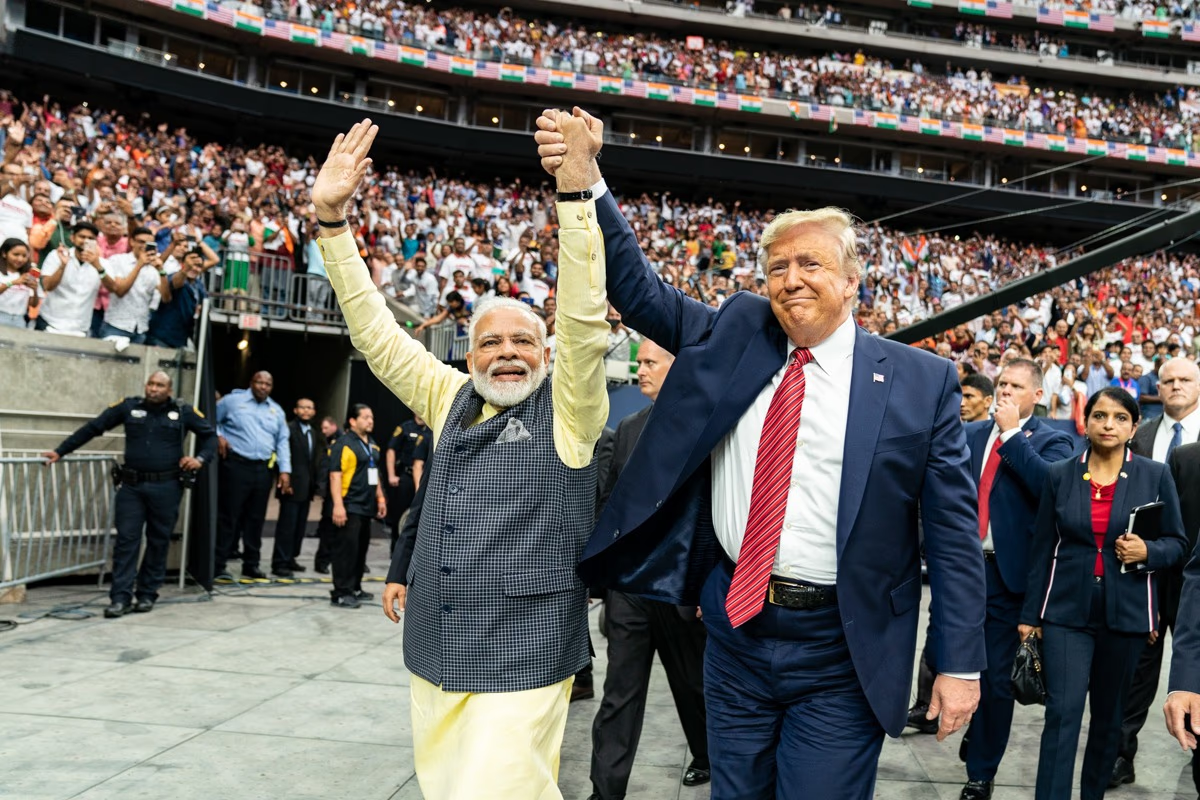
Source: aajtak
President Donald Trump was the honor guest. As Modi and Trump entered the stadium hand in hand, cheers echoed all around. In 2020, following this, during Trump’s India visit, a reciprocal event was hosted in Ahmedabad called Namaste Trump. Trump even used the slogan
Abki Bar, Trump Sarkar,
adapted from a BJP election campaign.
Examining these evolving Indo-US ties reveals that relations aren't solely driven by diplomacy but significantly influenced by personal chemistry.
